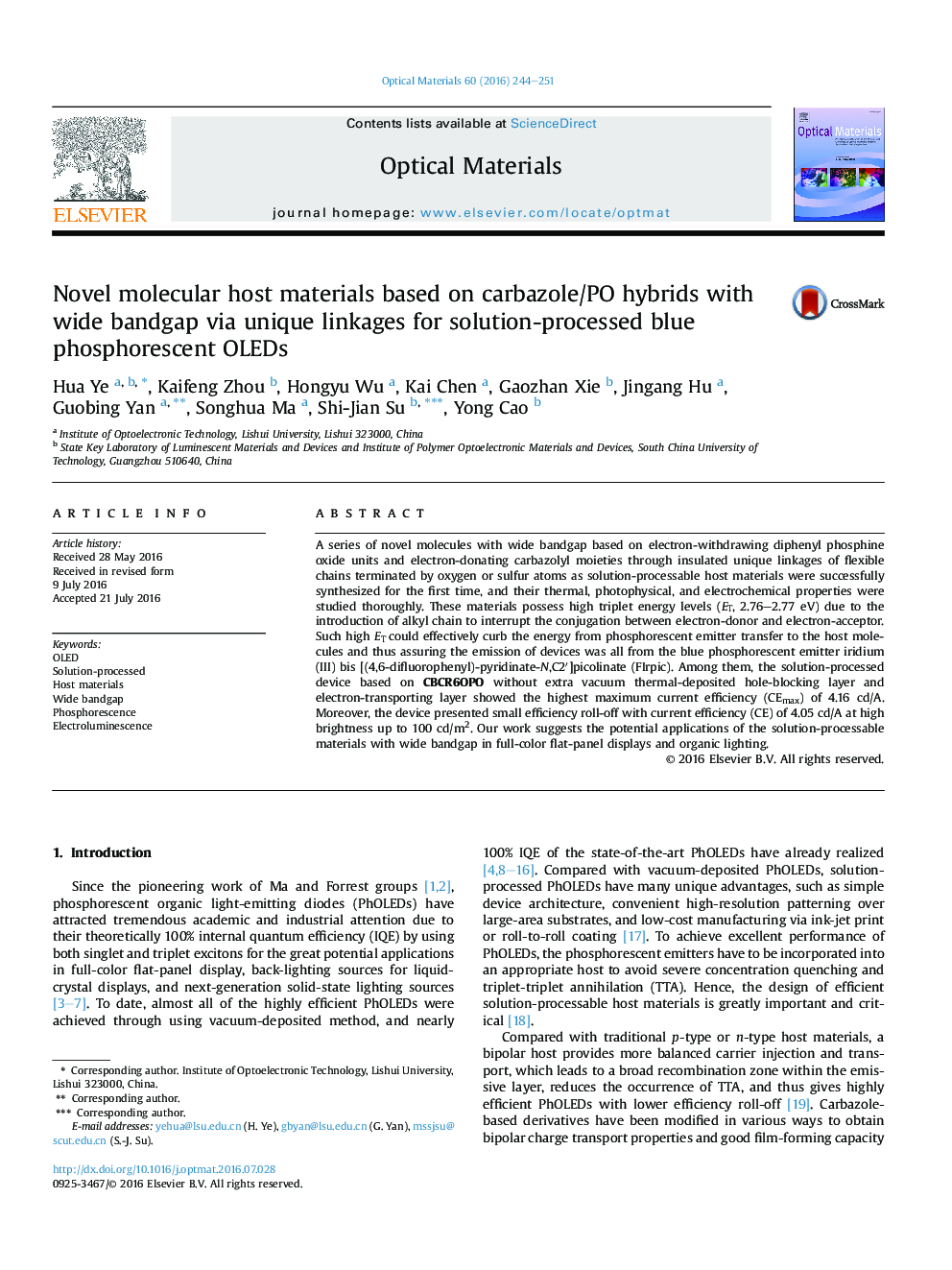| Article ID | Journal | Published Year | Pages | File Type |
|---|---|---|---|---|
| 1493215 | Optical Materials | 2016 | 8 Pages |
•A series of solution-processed molecular hosts with wide bandgap were synthesized.•Hosts containing phosphine oxide units, carbazolyl moieties and flexible chains.•These host materials possesses high triplet energy levels of 2.76–2.77 eV.•Solution-processed FIrpic-doped blue phosphorescent devices were fabricated.•The highest maximum current efficiency (CEmax) of 4.16 cd/A were achieved.
A series of novel molecules with wide bandgap based on electron-withdrawing diphenyl phosphine oxide units and electron-donating carbazolyl moieties through insulated unique linkages of flexible chains terminated by oxygen or sulfur atoms as solution-processable host materials were successfully synthesized for the first time, and their thermal, photophysical, and electrochemical properties were studied thoroughly. These materials possess high triplet energy levels (ET, 2.76–2.77 eV) due to the introduction of alkyl chain to interrupt the conjugation between electron-donor and electron-acceptor. Such high ET could effectively curb the energy from phosphorescent emitter transfer to the host molecules and thus assuring the emission of devices was all from the blue phosphorescent emitter iridium (III) bis [(4,6-difluorophenyl)-pyridinate-N,C2′]picolinate (FIrpic). Among them, the solution-processed device based on CBCR6OPO without extra vacuum thermal-deposited hole-blocking layer and electron-transporting layer showed the highest maximum current efficiency (CEmax) of 4.16 cd/A. Moreover, the device presented small efficiency roll-off with current efficiency (CE) of 4.05 cd/A at high brightness up to 100 cd/m2. Our work suggests the potential applications of the solution-processable materials with wide bandgap in full-color flat-panel displays and organic lighting.
Graphical abstractFigure optionsDownload full-size imageDownload high-quality image (156 K)Download as PowerPoint slide
